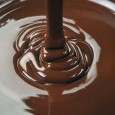Bakeware has improved steadily over the last decade, especially with the increasing use of silicone. While glass and metal products have their benefits, silicone bakeware is now considered a state-of-the-art product: it is flexible and cooks evenly at all temperatures. More good news: it is nonstick, requiring no oiling on the front-end and little cleanup on the back-end. Silicone bakeware comes in a wide range of products — spatulas, cake pans, potholders, muffin pans – and baking mats and sheets.
What is Silicone?
Silicone is a rubbery FDA-approved material. It can withstand temperatures as low as 40 degrees F and up to 475 degrees F and it won’t warp, burn or crack under extreme temperatures. And, generally speaking, silicone is not hot to the baker’s touch. (We should note that all silicone products are not created equal so you should be aware of varying quality among products.) Silicone has numerous other qualities: it is flexible, durable and, over time, is a good value for the money.
Why Use a Silicone Baking Sheet?
Oh, let us count the ways. A professional silicone baking sheet eliminates the need for parchment paper and/or baking sprays. It also disperses heat so tops and bottoms brown evenly, reducing the chances of burning or scorching your cookies, cakes and breads. It is easy to clean and dishwasher safe. Most of the ingredients wipe off with little effort, even before actually washing the sheet. It will not tear, break or burn. Overall, this type of sheet will last longer than a metal baking sheet.
How to Best Use a Silicone Baking Sheet
Think of it as a one-stop tool. A silicone sheet used for baking is an ideal surface for preparing your dough and pastries so that you don’t have to move them onto another surface for baking. Beyond baking, you can also use this sheet for making dishes in the microwave and freezer as silicone is both freezer and refrigerator-safe. Try using a silicone baking sheet to roast potatoes, vegetables or meat for minimum cleanup. Or when you need to freeze dishes before baking them, lay them out on these sheets so they can move right into the oven.


